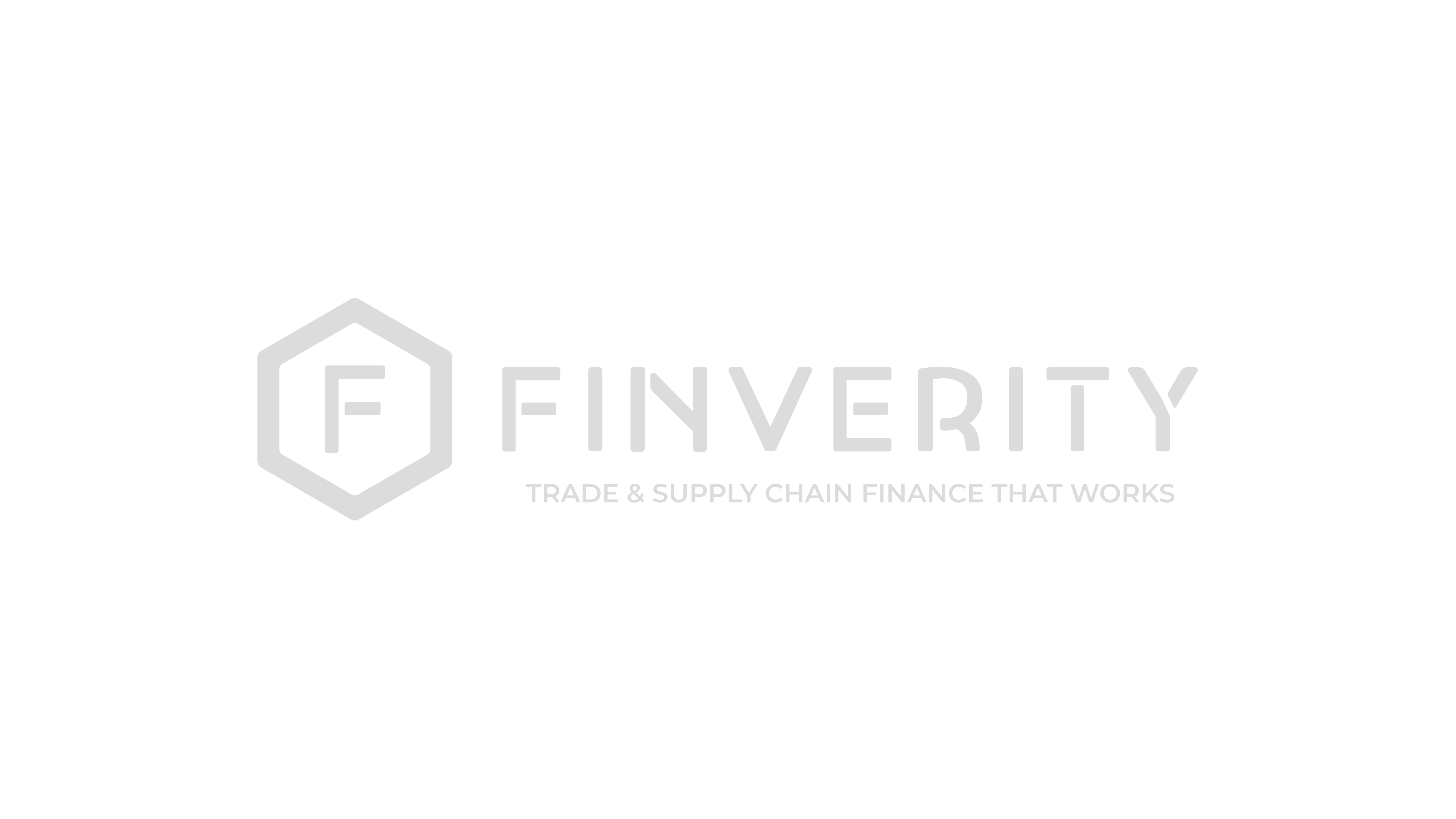How to navigate the Finverity platform
The Finverity Platform is designed to give you full flexibility to manage a wide range of supply chain finance transactions with different structures, limits and pricing.
This is a short overview of the key concepts in the Finverity platform to help you and your customers understand how to get the most from its capabilities.
Company
Each corporate entity is known as a “Company” on the platform. You can create a profile for each entity as part of the Corporate Onboarding flow.
There are two types of Company - Funders (companies which provide funding on the platform) and Customers (buyers and/or suppliers on the platform).
The Company profile contains basic information about the entity such as legal name, representatives and owners, the users invited to the platform and verified bank accounts.
Customers
Once a Company profile for a customer is created, that customer can be linked to any number of facilities (known on Finverity as programmes or deals), as either a buyer or a supplier.
We use the term “Payer” to refer to buyers / purchasers on the Finverity Platform.
We use the term “Seller” to refer to suppliers / vendors on the Finverity Platform.
Limits and pricing are created and maintained within programmes and deals, not on individual customer profiles.
Anchor or Deal Anchor
An Anchor is the corporate client of the funder and is typically the party that has initiated the facility. In a receivables transaction this is typically the Supplier and in a payables transaction this is typically the Payer though the platform provides flexibility for your to define this (e.g. for distributor finance or PO financing this could be the Buyer or Supplier)
Deal
A Deal is an individual facility between at least one Payer (i.e. buyer) and one Seller (i.e. supplier). The Deal profile contains all the information you need about:
What type of Product it is
Who is the Anchor (e.g. Payer or Seller)
Who are the Counterparties (i.e. the Sellers or Payers)
Pricing and fees
Limits
Each Deal must be a part of a Programme, so a Programme must be created first.
Programme
A programme is a collection of deals (or a single deal) with the same Anchor, falling under a single Limit.
Programmes mean that you can set a global limit for a Customer and create different deals (each with their own limit) controlled by that global limit.
There are two main ways to use programmes to manage multiple deals:
If you want to set a limit for a customer across multiple facilities and products.
For example, you may have 2 facilities with your customer, ACME (a Payer) - one which is disclosed to its suppliers and one which is not. Both facilities have a limit of $20m but you want your total exposure to ACME to be $30m. For each facility you will create a deal with a $20m limit, and then add those deals to a programme with a $30m limit - this will mean total funding across both facilities will never exceed $30m
2. If you want to create different terms for different counterparties within a single facility.
For example, if you have a facility with the supplier, ABC Corp with 100 Payers and there are sub-limits and different pricing relating to the three largest Payers, you could set up 4 deals - one for each of the biggest Payers with the specific terms relating to them, and a deal with the terms relating to the remaining 97 Payers. The programme limit will mange the global limit across all the individual deals.
Product
Each deal will relate to a particular product (e.g. receivables, payables, purchase order finance, distributor finance).
You can name and define your own products to make it easy to set up multiple deals that have similar structures.
For each Product you will define the following:
Product Group: The high level definition of the product (e.g. Payer-led receivables)
Type: receivables purchase or loan
Anchor: Payer or Seller
Instrument: invoice, loan or purchase order
Product structure:
Which previously defined product group it relates to
If there is recourse to the Seller
If it is silent/undisclosed to counterparties
Workflow settings for that product (outlining who is responsible for uploading and approving instruments, requesting funding and settlements)
Instrument
The Finverity platform assumes that each Deal will relate to an underlying asset or type of collateral, which we call an Instrument. When you create a product you can select whether the Instrument is an Invoice, a Purchase Order or a Loan.
Floating rates
The Finverity Platform allows you to set up deals with fees linked to variable interest rates - which are called floating rates on the Platform (e.g. SOFR, SONIA). You will first set up a template under Floating Rates which defines the different rates you want to use (e.g. SOFR 3M, SOFR 6M). When you create a deal you will refer to these rates when you set up pricing and fees. These Floating Rates can be updated via [API and SFTP].
FX rates
For each [Funder/Customer/Corporate Entity] you can define the currency pairs which will be used in the Deal. These FX rates will be used to convert the value of an instrument to the Deal currency in order to calculate the limit used. These FX Rates can be updated via [API and SFTP].
